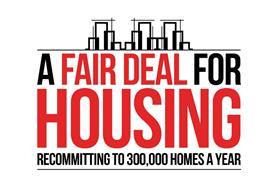Government agency blames labour and materials shortages as it undershoots targets by as much as 37%

Homes England has missed all five of its housing delivery targets in 2021/22.
The government agency, which administers the £11.5bn affordable homes programme and £1.8bn brownfield fund, revealed the missed targets in its annual report.
A total of 37,632 homes of all kinds supported by Homes England were completed in the year, 15% below its target of 44,275. It also missed its target for affordable completions, delivering 26,953 homes – 21% off the 34,349 targeted.
The agency also failed to hit its target for delivering homes that are “additional to the market” (ie, they would not have been built without Homes England intervention) by 18%, as well as its target for unlocking housing capacity by 37%.
Homes England, in the report, said it had set a target of increasing completions by 27% on the expectation that a “significant number” of affordable housing projects would complete this year after starting in previous years, however this did not happen to the extent expected.
Homes England housing delivery targets:
| KPI | 2021/22 actual | 2021/22 target | Difference | % away from hitting target |
|---|---|---|---|---|
| Completions directly supported by Homes England | 37,632 | 44,275 | 6,643 | 15.00 |
| Completions directly supported by Homes England (additional to the market) | 25,279 | 30,922 | 5,643 | 18.25 |
| Affordable completed homes supported by Homes England | 26,953 | 34,349 | 7,396 | 21.53 |
| Starts supported | 38,562 | 48,810 | 10,248 | 21.00 |
| Unlocked housing capacity | 58,993 | 94,863 | 35,870 | 37.81 |
Source: Homes England annual report and financial statements
The report said: “Our affordable homes programmes are a core contributor towards our completions and over the past year partners have reported challenges in delivering completions.
“This has mainly been due to delays and access to labour supply and materials. Schemes approaching completion were more directly impacted by labour and materials shortages because it is at this stage where the need for resource is greatest.
“Delays added c. 20 weeks to delivery times, reducing capacity to complete homes in the original timescales.”
It said housing associations and other partners delivering homes through the timebound 2021-26 shared ownership and affordable housing programme “raised a legitimate concern of losing delivery because of limited access to materials and labour, and no capacity to stockpile”.
Homes England said it responded by securing budget flexibility from the Department of Levelling Up Housing and Communities to provide support this current financial year (2022/23) instead. “This support helped to absorb delays to material delivery, providing housing associations with the confidence to continue delivering” it said.
The figure of 37,632 completed homes was however 8% higher than the amount delivered in 2020/21, although that year’s figure was impacted by the pandemic.
Homes England also revealed there were more than 10,000 fewer homes started with its support in the year than it had hoped for, missing its target by 21%.
It cited issues affecting SMEs housebuilders, including planning delays, supply chain issues, material availability and labour shortages. It also said planning delays and capacity issues had affected local authority development projects.
A Fair Deal for Housing

Housing Today believes the government should not back away from its manifesto pledge of building 300,000 new homes a year by the middle of the decade. We badly need more homes, and a lack of supply is a major factor in creating problems of affordability for both buyers and renters.
Over the next few months, Housing Today will be exploring potential solutions to help us ramp up housebuilding to 300,000. These are likely to include different ways of working, funding asks of government and policy ideas that could boost housebuilding.
We want to hear from you: what do you think can make a difference at a policy level?
What can the industry do better?
We believe that, with the right commitments from ministers and the industry, it is possible to build more homes and help the government to meet its objectives to “build beautiful”, improve quality and safety, boost home ownership and level up the UK.










No comments yet